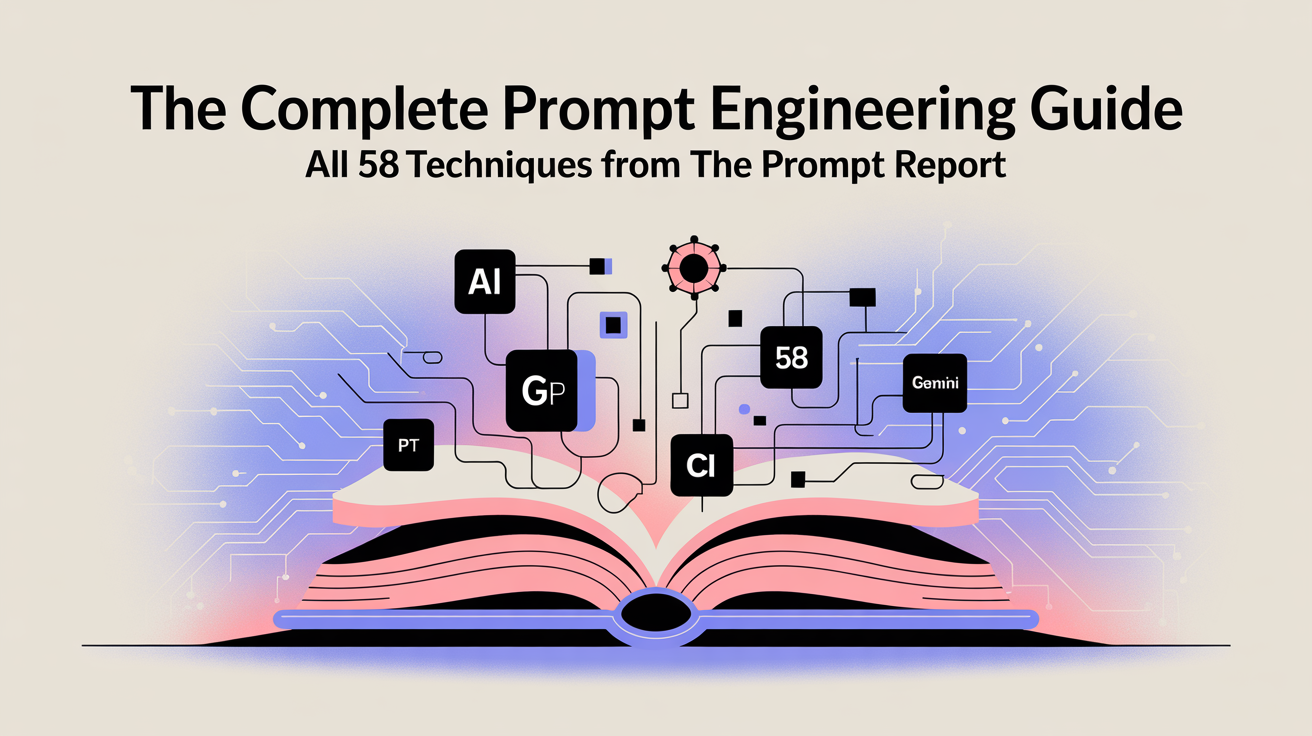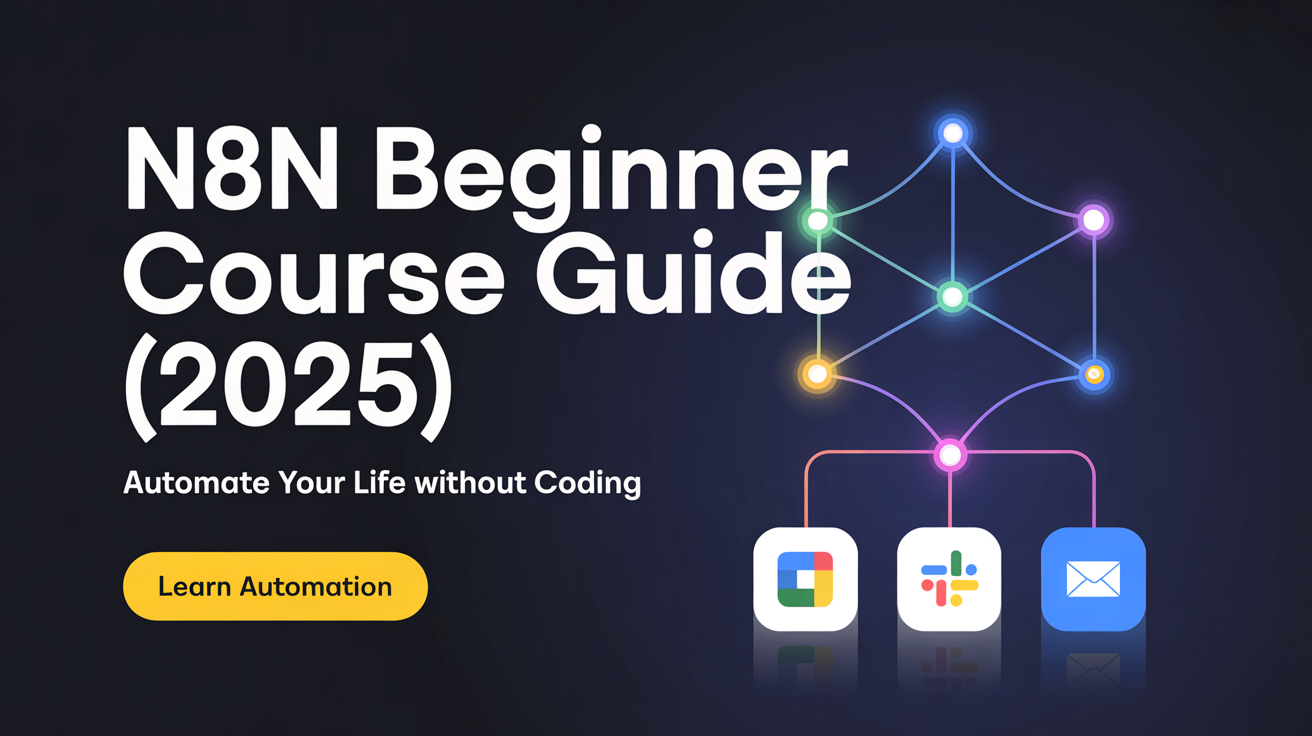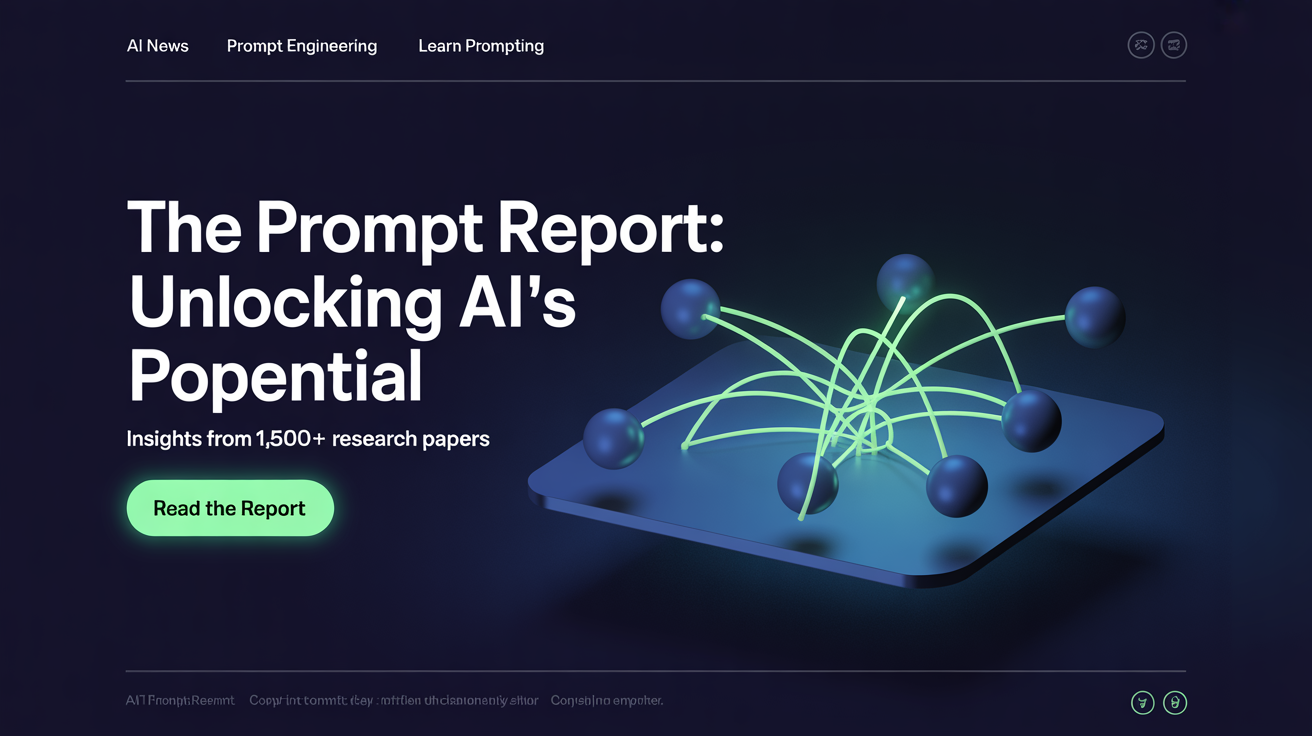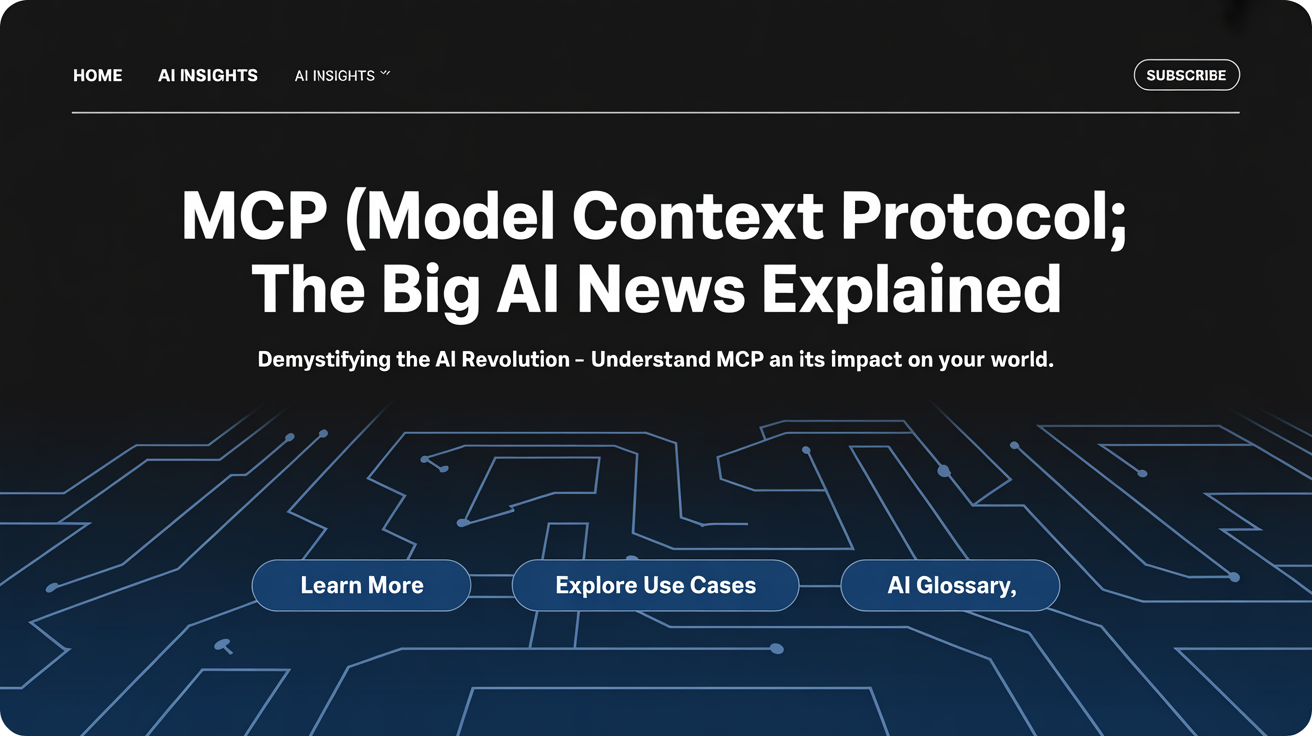The Complete Prompt Engineering Guide: All 58 Techniques from The Prompt Report (Master Class)

Tired of getting mediocre responses from ChatGPT, Claude, or other AI tools? You're not alone. Most people use maybe 2-3 basic prompting approaches, missing out on 55+ proven techniques that could dramatically improve their results.
This is the most comprehensive prompting guide you'll find anywhere – based on The Prompt Report, which analyzed 1,500+ academic papers to identify every proven technique for communicating with AI. I've spent weeks translating this 80-page research paper into practical, easy-to-follow instructions that anyone can use.
What you'll master in this complete guide:
- All 58 text-based prompting techniques organized by category
- When to use each technique (with real examples)
- Step-by-step instructions for immediate implementation
- Advanced combinations that multiply your results
- Troubleshooting guide for when techniques don't work
Time to master: 2-3 hours of focused reading, lifetime of better AI interactions
WHAT You'll Learn: The Complete Taxonomy of Prompting
The 6 Major Categories (58 Techniques Total)
The Prompt Report organizes all prompting techniques into 6 categories based on how they solve different problems:
- In-Context Learning (12 techniques) - Teaching AI through examples
- Zero-Shot Prompting (8 techniques) - Getting results without examples
- Thought Generation (15 techniques) - Making AI show its reasoning
- Decomposition (9 techniques) - Breaking complex tasks into parts
- Ensembling (7 techniques) - Using multiple prompts for better results
- Self-Criticism (7 techniques) - Making AI improve its own answers
Why this framework matters: Instead of randomly trying prompting "tips," you'll understand which category of technique to use for different types of problems.
What Makes This Different from Other Prompting Guides
Evidence-based: Every technique is backed by academic research, not social media tips Complete: Covers ALL 58 techniques identified in the most comprehensive study ever done Practical: Real examples you can copy and modify for your needs Organized: Logical progression from basic to advanced techniques Tool-agnostic: Works with ChatGPT, Claude, Gemini, or any AI tool
WHERE These Techniques Work
Universal Application Across AI Tools
These techniques work with:
- ChatGPT (all versions - 3.5, 4, 4o)
- Claude (all versions - 3.5 Sonnet, 3 Opus, etc.)
- Google Gemini (formerly Bard)
- Microsoft Copilot
- Open-source models (Llama, Mistral, etc.)
- Any text-based AI system
Platform Requirements
What you need:
- Access to any AI chatbot or API
- Ability to type prompts (no special software)
- 15-30 minutes per technique to practice
- Willingness to experiment and iterate
No coding required: All techniques use natural language prompts
WHO Should Use This Complete Guide
Perfect For These Situations
You should master these techniques if you:
- Use AI tools regularly for work, school, or personal projects
- Feel frustrated by inconsistent AI responses
- Want to maximize productivity with AI assistants
- Need reliable, high-quality output from AI tools
- Are curious about the science behind effective AI communication
Skill levels covered:
- Beginners: Start with simple techniques in each category
- Intermediate: Learn advanced combinations and optimizations
- Advanced: Master edge cases and complex applications
Who Should Wait or Use Simpler Resources
Consider starting elsewhere if you:
- Haven't used AI tools at all yet (try basic tutorials first)
- Only need AI for very simple tasks
- Prefer quick tips over comprehensive understanding
- Don't have 2-3 hours for systematic learning
WHEN to Use Each Category of Techniques
The Complete Decision Framework
Use In-Context Learning when:
- You have examples of what you want
- The task is similar to something you've done before
- You want to establish a specific style or format
- Quality is more important than speed
Use Zero-Shot when:
- You don't have examples available
- The task is completely new or unique
- You need quick results without setup
- You're exploring what AI can do
Use Thought Generation when:
- The problem requires reasoning or logic
- You need to understand how AI reached its answer
- The task involves multiple steps
- Accuracy is critical (math, analysis, decisions)
Use Decomposition when:
- The problem is complex or overwhelming
- You need to solve parts independently
- Breaking things down makes verification easier
- You're tackling a multi-step process
Use Ensembling when:
- You need high confidence in the answer
- The stakes are high (important decisions)
- You want to catch errors or biases
- You have time for multiple attempts
Use Self-Criticism when:
- You want AI to double-check its work
- The output needs refinement
- You're iterating toward a better solution
- Quality improvement is worth extra time
WHY This Comprehensive Approach Works
The Science Behind the Techniques
Research findings from 1,500+ papers:
- Different problems require different prompting strategies
- Combining techniques often works better than using them alone
- Context and examples dramatically improve output quality
- Reasoning steps help AI avoid common mistakes
- Multiple attempts catch errors single prompts miss
Real-World Impact You Can Expect
Time savings: 50-80% reduction in prompt iterations Quality improvement: 200-400% better output relevance Consistency: Predictable results instead of random luck Confidence: Understanding why techniques work Versatility: One skillset works across all AI tools
HOW to Use This Guide: Master All 58 Techniques
Your Complete Learning Path
Phase 1: Foundation (Week 1)
- Master 2-3 techniques from each category
- Practice with real tasks you need to accomplish
- Compare results to your current prompting style
- Build confidence with proven techniques
Phase 2: Expansion (Week 2-3)
- Learn all techniques in your most useful categories
- Experiment with technique combinations
- Create templates for your common tasks
- Start helping others with prompting challenges
Phase 3: Mastery (Month 2+)
- Master all 58 techniques
- Develop advanced combination strategies
- Troubleshoot edge cases and failures
- Contribute to the prompting community
CATEGORY 1: IN-CONTEXT LEARNING (12 Techniques)
Teaching AI Through Examples
What In-Context Learning Does
Simple explanation: You show AI examples of what you want, and it learns to replicate that pattern without any training or coding.
Think of it like: Showing someone how to format a document by giving them examples, then asking them to format a new document the same way.
The 12 In-Context Learning Techniques
1. Few-Shot Prompting (The Foundation Technique)
What it is: Provide 2-5 examples of the task before asking AI to perform it.
Best for: Any task where you have good examples
Template:
Here are examples of [task]:
Example 1:
Input: [example input 1]
Output: [example output 1]
Example 2:
Input: [example input 2]
Output: [example output 2]
Example 3:
Input: [example input 3]
Output: [example output 3]
Now do the same for:
Input: [your actual input]
Output:
Real example:
Here are examples of writing professional email subject lines:
Example 1:
Email content: Meeting tomorrow at 2pm to discuss quarterly budget
Subject: Q4 Budget Review - Tomorrow 2pm
Example 2:
Email content: Need approval for new marketing campaign by Friday
Subject: Marketing Campaign Approval Needed by Friday
Now write a subject line for:
Email content: Sending updated project timeline with new deadlines
Subject:
2. Chain-of-Thought (CoT) Few-Shot
What it is: Few-shot prompting but your examples include the reasoning steps.
Best for: Math problems, logical reasoning, complex analysis
Template:
Here are examples of [task] with step-by-step reasoning:
Example 1:
Problem: [problem 1]
Reasoning: [step 1], [step 2], [step 3]
Answer: [answer 1]
Example 2:
Problem: [problem 2]
Reasoning: [step 1], [step 2], [step 3]
Answer: [answer 2]
Now solve this:
Problem: [your problem]
Reasoning:
Real example:
Here are examples of calculating restaurant tips with reasoning:
Example 1:
Problem: Bill is $47.50, want to tip 18%
Reasoning: First convert 18% to decimal (0.18), then multiply $47.50 × 0.18 = $8.55, round to $8.55
Answer: Tip $8.55
Example 2:
Problem: Bill is $23.75, want to tip 20%
Reasoning: Convert 20% to decimal (0.20), then multiply $23.75 × 0.20 = $4.75
Answer: Tip $4.75
Now solve this:
Problem: Bill is $81.20, want to tip 15%
Reasoning:
3. Zero-Shot Chain-of-Thought (Zero-Shot CoT)
What it is: Ask AI to think step-by-step without providing examples.
Best for: When you don't have examples but need reasoning
Magic phrase: "Let's think step by step."
Template:
[Your question or problem]
Let's think step by step.
Real example:
If a train travels 150 miles in 2.5 hours, and then travels another 200 miles in 3 hours, what's the average speed for the entire trip?
Let's think step by step.
4. Few-Shot Chain-of-Thought (Few-Shot CoT)
What it is: Combination of few-shot prompting with chain-of-thought reasoning.
Best for: Complex problems where you have examples with reasoning
Template:
Here are examples of solving [type of problem]:
Q: [question 1]
A: Let's think step by step. [reasoning steps]. Therefore, [answer].
Q: [question 2]
A: Let's think step by step. [reasoning steps]. Therefore, [answer].
Q: [your question]
A: Let's think step by step.
5. Analogical Prompting
What it is: Give examples that are similar to your problem but in different contexts.
Best for: Creative problem-solving, understanding new concepts
Template:
Here's an analogy to help solve [your problem]:
Similar situation: [analogous situation]
How it was solved: [solution approach]
Key principles: [underlying principles]
Now apply these principles to solve:
[Your actual problem]
Real example:
Here's an analogy to help organize a chaotic email inbox:
Similar situation: Organizing a messy physical desk
How it was solved: Sort papers into clear categories (urgent, reference, trash), create a filing system, set aside time daily for maintenance
Key principles: Categorization, consistent system, regular maintenance
Now apply these principles to solve:
How to organize an email inbox with 2,000+ unread messages
6. Instruction Following
What it is: Give detailed, specific instructions about how to complete the task.
Best for: When you need precise control over the process
Template:
Follow these instructions exactly:
1. [First instruction]
2. [Second instruction]
3. [Third instruction]
...
Task: [Your task]
Real example:
Follow these instructions exactly:
1. Read the email content carefully
2. Identify the main action requested
3. Determine urgency level (high/medium/low)
4. Write a 1-sentence summary
5. Suggest next steps
Task: Analyze this customer complaint email: [email content]
7. Role Prompting (Persona)
What it is: Tell AI to act as a specific type of expert or character.
Best for: Getting specialized knowledge or writing style
Template:
Act as a [specific role/expert]. You are [relevant qualifications/characteristics].
[Your request]
Real example:
Act as an experienced small business financial advisor. You have 15 years of experience helping businesses with 5-50 employees manage their finances effectively.
I'm spending $500/month on various software subscriptions for my 8-person team. Help me evaluate if this is reasonable and suggest ways to optimize our software costs.
8. Generated Knowledge
What it is: Ask AI to first generate relevant background information, then use that knowledge to answer your question.
Best for: Complex topics where context helps
Template:
First, generate some relevant knowledge about [topic].
Then, using that knowledge, answer this question: [your question]
Real example:
First, generate some relevant knowledge about how small businesses typically handle customer retention.
Then, using that knowledge, answer this question: What are 3 practical strategies I can implement this month to reduce customer churn in my online service business?
9. Least-to-Most Prompting
What it is: Start with the simplest part of a problem, then gradually build to more complex parts.
Best for: Learning new topics, complex multi-step problems
Template:
Let's solve this step-by-step, starting with the simplest parts:
1. First, let's understand [simplest component]
2. Next, let's tackle [slightly more complex component]
3. Finally, let's put it all together for [complete solution]
Problem: [Your complex problem]
10. Self-Consistency
What it is: Ask for multiple solutions to the same problem, then choose the most common answer.
Best for: Important decisions, math problems, fact-checking
Template:
Solve this problem 3 different ways and show your work for each:
Method 1: [approach 1]
Method 2: [approach 2]
Method 3: [approach 3]
Then tell me which answer appears most often.
Problem: [Your problem]
11. Ensemble Prompting
What it is: Use multiple different prompting approaches for the same task.
Best for: Critical tasks where accuracy matters most
Template:
I'll solve this problem using 3 different approaches:
Approach 1 (Few-shot): [include examples]
Approach 2 (Chain-of-thought): [ask for reasoning]
Approach 3 (Role-playing): [assign expert role]
Problem: [Your problem]
Compare the results and give me the best answer.
12. In-Context Learning with Instructions
What it is: Combine examples with detailed instructions.
Best for: Complex tasks that need both examples and precise control
Template:
Instructions: [Detailed instructions about the process]
Examples:
[Example 1]
[Example 2]
[Example 3]
Now follow the instructions and examples to complete:
[Your task]
CATEGORY 2: ZERO-SHOT PROMPTING (8 Techniques)
Getting Results Without Examples
What Zero-Shot Prompting Does
Simple explanation: Give AI a task without showing any examples, relying on its built-in knowledge and your instructions.
Think of it like: Asking someone to do something based only on their existing skills and your description.
The 8 Zero-Shot Techniques
1. Direct Prompting
What it is: Simply ask for what you want in clear, direct language.
Best for: Straightforward tasks, getting quick answers
Template:
[Clear, direct request]
Real example:
Write a 100-word summary of the benefits of daily exercise.
2. Instruction Prompting
What it is: Give step-by-step instructions without examples.
Best for: Processes you can describe clearly
Template:
Please do the following:
1. [Step 1]
2. [Step 2]
3. [Step 3]
Apply this to: [Your specific case]
3. Zero-Shot Chain-of-Thought
What it is: Ask AI to show its reasoning without providing example reasoning.
Best for: Problems requiring logical thinking
Magic phrases: "Let's think step by step" or "Think through this carefully"
Template:
[Your problem or question]
Let's think step by step.
4. Role-Based Zero-Shot
What it is: Assign a role without providing examples of that role in action.
Best for: Leveraging specialized knowledge
Template:
You are a [specific role]. [Optional: brief description of expertise]
[Your request]
Real example:
You are a experienced small business accountant.
What are the 5 most important financial metrics I should track monthly for my consulting business?
5. Format-Specified Prompting
What it is: Specify exactly how you want the output formatted.
Best for: When presentation matters
Template:
[Your request]
Format your response as:
- [Format specification 1]
- [Format specification 2]
- [Format specification 3]
Real example:
List the pros and cons of working from home.
Format your response as:
- Start with a brief introduction
- Use bullet points for pros
- Use bullet points for cons
- End with a balanced conclusion
- Keep total response under 200 words
6. Constraint-Based Prompting
What it is: Add specific limitations or requirements to your request.
Best for: When you need output to meet specific criteria
Template:
[Your request]
Constraints:
- [Constraint 1]
- [Constraint 2]
- [Constraint 3]
Real example:
Write a product description for wireless earbuds.
Constraints:
- Maximum 50 words
- Focus on benefits, not features
- Include a call-to-action
- Use active voice
- Mention sound quality and comfort
7. Perspective Prompting
What it is: Ask AI to consider a topic from a specific viewpoint.
Best for: Getting balanced views, exploring different angles
Template:
Consider [topic] from the perspective of [specific viewpoint].
[Your question or request]
Real example:
Consider remote work policies from the perspective of a small business owner with 12 employees.
What are the main challenges and how might they be addressed?
8. Meta-Prompting
What it is: Ask AI to help you create better prompts for your task.
Best for: When you're not sure how to ask for what you want
Template:
I want to accomplish [goal]. Help me write a better prompt to get [specific type of result].
Real example:
I want to get better at writing emails that actually get responses from busy executives. Help me write a prompt that will teach me the specific techniques and give me templates I can use.
CATEGORY 3: THOUGHT GENERATION (15 Techniques)
Making AI Show Its Reasoning
What Thought Generation Does
Simple explanation: These techniques make AI "think out loud" so you can see how it reaches its conclusions.
Think of it like: Asking someone to show their work on a math problem instead of just giving you the answer.
The 15 Thought Generation Techniques
1. Chain-of-Thought (CoT)
What it is: Ask AI to break down its reasoning into clear steps.
Best for: Logic problems, math, complex analysis
Template:
[Your question]
Please show your reasoning step-by-step.
2. Tree of Thoughts
What it is: Explore multiple reasoning paths and compare them.
Best for: Complex decisions with multiple possible approaches
Template:
For this problem, explore 3 different reasoning approaches:
Path 1: [Approach 1]
Path 2: [Approach 2]
Path 3: [Approach 3]
Compare the paths and recommend the best one.
Problem: [Your problem]
3. Step-Back Prompting
What it is: Ask AI to first identify the broader principles, then apply them.
Best for: Learning, understanding concepts deeply
Template:
Before solving this specific problem, first step back and explain the general principles or concepts involved.
Then apply those principles to solve: [Your specific problem]
4. Self-Ask
What it is: AI asks itself questions to work through a problem.
Best for: Information gathering, research tasks
Template:
Work through this by asking yourself relevant questions and answering them.
Task: [Your task]
Real example:
Work through this by asking yourself relevant questions and answering them.
Task: Help me decide whether to hire a virtual assistant for my small business.
5. Iterative Reasoning
What it is: Refine the answer through multiple rounds of thinking.
Best for: Complex problems that benefit from refinement
Template:
First attempt: [Initial reasoning]
Reflection: [What could be improved?]
Refined attempt: [Better reasoning]
Final check: [Is this the best answer?]
Problem: [Your problem]
6. Analogical Reasoning
What it is: Use analogies to think through problems.
Best for: Understanding new concepts, creative problem-solving
Template:
Think of an analogy that relates to [your problem], then use that analogy to reason through the solution.
Problem: [Your problem]
7. Contrastive Chain-of-Thought
What it is: Show both correct and incorrect reasoning paths.
Best for: Learning from mistakes, understanding why wrong approaches fail
Template:
For this problem, show me:
1. A correct reasoning path that leads to the right answer
2. An incorrect reasoning path that would lead to a wrong answer
3. Explain why the correct path works and the incorrect path fails
Problem: [Your problem]
8. Uncertainty-Aware Reasoning
What it is: Acknowledge and work with uncertainty in the reasoning process.
Best for: Real-world problems with incomplete information
Template:
Reason through this problem while acknowledging what you're certain about and what you're uncertain about. Make your best recommendations despite the uncertainty.
Problem: [Your problem]
9. Verification Reasoning
What it is: Check your reasoning by working backwards from the conclusion.
Best for: Important decisions, double-checking work
Template:
1. First, solve this problem with your normal reasoning
2. Then, verify your answer by working backwards
3. Check if both approaches lead to the same conclusion
Problem: [Your problem]
10. Multi-Perspective Reasoning
What it is: Consider the problem from multiple viewpoints before concluding.
Best for: Balanced analysis, avoiding bias
Template:
Reason through this from these perspectives:
- Perspective 1: [viewpoint 1]
- Perspective 2: [viewpoint 2]
- Perspective 3: [viewpoint 3]
Then synthesize these perspectives into a balanced conclusion.
Topic: [Your topic]
11. Causal Reasoning
What it is: Focus on cause-and-effect relationships in your reasoning.
Best for: Understanding why things happen, predicting outcomes
Template:
Analyze the cause-and-effect relationships in this situation:
- What are the root causes?
- What are the immediate effects?
- What are the long-term consequences?
- How do these connect to each other?
Situation: [Your situation]
12. Temporal Reasoning
What it is: Consider how timing and sequence affect the problem.
Best for: Planning, understanding processes over time
Template:
Think through this problem considering the time dimension:
- What happened in the past that led to this?
- What's happening now?
- What will likely happen in the future?
- How does timing affect the solution?
Problem: [Your problem]
13. Compositional Reasoning
What it is: Break complex problems into components and reason about each part.
Best for: Systems thinking, complex analysis
Template:
Break this down into its key components:
- Component 1: [part 1]
- Component 2: [part 2]
- Component 3: [part 3]
Reason about each component separately, then explain how they interact.
System/Problem: [Your complex problem]
14. Metacognitive Reasoning
What it is: Think about your thinking process itself.
Best for: Learning, improving reasoning skills
Template:
Not only solve this problem, but also reflect on:
- What reasoning strategies are you using?
- Why did you choose these approaches?
- What are the strengths and limitations of your reasoning?
- How confident are you in your conclusion?
Problem: [Your problem]
15. Socratic Questioning
What it is: Use a series of probing questions to develop reasoning.
Best for: Deep understanding, critical thinking
Template:
Approach this by asking and answering a series of probing questions:
- What exactly is the problem?
- What do we already know?
- What assumptions are we making?
- What evidence supports or contradicts our thinking?
- What are the implications of our conclusion?
Topic: [Your topic]
CATEGORY 4: DECOMPOSITION (9 Techniques)
Breaking Complex Tasks Into Parts
What Decomposition Does
Simple explanation: Take big, complicated problems and break them into smaller, manageable pieces.
Think of it like: Taking apart a complex recipe into individual cooking steps that you can follow one at a time.
The 9 Decomposition Techniques
1. Least-to-Most Prompting
What it is: Start with the simplest sub-problem and gradually work up to the full complexity.
Best for: Learning new skills, complex multi-step problems
Template:
Let's solve this by starting with the simplest parts:
1. First, let's handle [simplest sub-problem]
2. Next, let's address [slightly more complex sub-problem]
3. Now let's tackle [more complex sub-problem]
4. Finally, let's solve [full original problem]
Original problem: [Your complex problem]
2. Subgoal Decomposition
What it is: Break your main goal into smaller, achievable subgoals.
Best for: Project planning, goal achievement
Template:
Main goal: [Your main goal]
Break this into subgoals:
1. Subgoal 1: [First subgoal]
2. Subgoal 2: [Second subgoal]
3. Subgoal 3: [Third subgoal]
For each subgoal, explain:
- What specific actions are needed
- What resources are required
- How long it might take
- How to measure success
3. Sequential Prompting
What it is: Solve parts of the problem in a specific sequence.
Best for: Processes that must happen in order
Template:
Solve this step-by-step in this exact sequence:
Step 1: [First step]
[Wait for completion before moving to step 2]
Step 2: [Second step]
[Wait for completion before moving to step 3]
Step 3: [Third step]
[Continue until complete]
Process: [Your sequential process]
4. Hierarchical Task Decomposition
What it is: Break tasks into hierarchical levels (main task → subtasks → sub-subtasks).
Best for: Complex projects, organizational planning
Template:
Main Task: [Your main task]
Level 1 Subtasks:
- Subtask A: [First major component]
- Sub-subtask A1: [Detail 1]
- Sub-subtask A2: [Detail 2]
- Subtask B: [Second major component]
- Sub-subtask B1: [Detail 1]
- Sub-subtask B2: [Detail 2]
Continue breaking down until each piece is actionable.
5. Divide and Conquer
What it is: Split the problem into independent parts that can be solved separately.
Best for: Problems where parts don't depend on each other
Template:
Divide this problem into independent parts:
Part 1: [Independent component 1]
Part 2: [Independent component 2]
Part 3: [Independent component 3]
Solve each part separately, then combine the solutions.
Problem: [Your problem]
6. Progressive Elaboration
What it is: Start with a high-level solution, then progressively add more detail.
Best for: Planning, design work
Template:
Level 1 (High-level overview): [Basic solution outline]
Level 2 (More detail): [Add more specifics to each part]
Level 3 (Full detail): [Complete implementation details]
Problem: [Your problem]
7. Constraint Relaxation
What it is: Temporarily remove some constraints to solve a simpler version, then add constraints back.
Best for: Very constrained problems
Template:
Original problem with all constraints: [Full problem]
Simplified problem (removing constraints): [Easier version]
- Removed constraint 1: [constraint]
- Removed constraint 2: [constraint]
Solve the simplified version first, then figure out how to add the constraints back.
8. Modular Decomposition
What it is: Break the problem into modules that interact through well-defined interfaces.
Best for: System design, complex processes
Template:
Break this into modules:
Module 1: [Function/purpose]
- Inputs: [What it receives]
- Outputs: [What it produces]
- Internal process: [How it works]
Module 2: [Function/purpose]
- Inputs: [What it receives]
- Outputs: [What it produces]
- Internal process: [How it works]
Explain how the modules connect and interact.
System: [Your complex system]
9. Timeline Decomposition
What it is: Break down the problem by time periods or phases.
Best for: Long-term planning, project management
Template:
Phase 1 (Timeframe: [duration]):
- Objectives: [What to accomplish]
- Key activities: [Main activities]
- Deliverables: [Expected outputs]
Phase 2 (Timeframe: [duration]):
- Objectives: [What to accomplish]
- Key activities: [Main activities]
- Deliverables: [Expected outputs]
Continue for all phases of: [Your long-term goal]
CATEGORY 5: ENSEMBLING (7 Techniques)
Using Multiple Prompts for Better Results
What Ensembling Does
Simple explanation: Get multiple "opinions" from AI using different approaches, then combine them for a better final answer.
Think of it like: Getting second and third opinions from doctors, then making a more informed decision.
The 7 Ensembling Techniques
1. Self-Consistency
What it is: Ask the same question multiple times and choose the most common answer.
Best for: Important decisions, fact-checking, math problems
Template:
I'll ask you the same question 3 times to check for consistency:
Attempt 1: [Your question]
Attempt 2: [Same question, slightly rephrased]
Attempt 3: [Same question, different phrasing]
Which answer appears most frequently? That's likely the correct one.
2. Multiple Approach Ensemble
What it is: Solve the same problem using different methods.
Best for: Complex problems with multiple solution paths
Template:
Solve this problem using these different approaches:
Approach 1 - [Method 1]: [description]
Approach 2 - [Method 2]: [description]
Approach 3 - [Method 3]: [description]
Compare the results and give me the best answer with explanation.
Problem: [Your problem]
3. Role-Based Ensemble
What it is: Get perspectives from multiple expert roles.
Best for: Complex decisions, business strategy
Template:
I want perspectives on this from multiple experts:
As a [Expert Role 1]: [perspective and advice]
As a [Expert Role 2]: [perspective and advice]
As a [Expert Role 3]: [perspective and advice]
Synthesize these perspectives into a balanced recommendation.
Question: [Your question]
Real example:
I want perspectives on expanding my small business internationally:
As a business strategist: [perspective and advice]
As a financial advisor: [perspective and advice]
As an international trade expert: [perspective and advice]
Synthesize these perspectives into a balanced recommendation.
Question: Should I expand my online course business to European markets next year?
4. Temperature Variation Ensemble
What it is: Use different creativity levels (if your AI tool allows) for varied responses.
Best for: Creative tasks, brainstorming
Template:
Give me responses with different levels of creativity:
Conservative response (low creativity): [focused, conventional answer]
Balanced response (medium creativity): [mix of conventional and creative]
Creative response (high creativity): [innovative, unconventional answer]
Then recommend which approach works best for: [Your situation]
5. Format Variation Ensemble
What it is: Ask for the same information in different formats.
Best for: Learning, comprehensive understanding
Template:
Explain [topic] in these different formats:
Format 1 - Detailed explanation: [comprehensive description]
Format 2 - Simple summary: [key points only]
Format 3 - Step-by-step guide: [actionable instructions]
Format 4 - Examples and analogies: [concrete illustrations]
Which format helps you understand [topic] best?
6. Adversarial Ensemble
What it is: Generate both arguments for and against a position.
Best for: Balanced analysis, decision-making
Template:
Present both sides of this issue:
Arguments FOR [position]:
- Argument 1: [supporting point]
- Argument 2: [supporting point]
- Argument 3: [supporting point]
Arguments AGAINST [position]:
- Counterargument 1: [opposing point]
- Counterargument 2: [opposing point]
- Counterargument 3: [opposing point]
Balanced conclusion: [weighing both sides]
Issue: [Your decision or topic]
7. Hierarchical Ensemble
What it is: Get answers at different levels of detail, then combine.
Best for: Complex topics that need both overview and details
Template:
Give me this information at multiple levels:
Level 1 - 30-second summary: [key point only]
Level 2 - 2-minute overview: [main points with brief explanation]
Level 3 - 10-minute deep dive: [comprehensive analysis with details]
Level 4 - Expert level: [technical details and nuances]
Topic: [Your topic]
CATEGORY 6: SELF-CRITICISM (7 Techniques)
Making AI Improve Its Own Answers
What Self-Criticism Does
Simple explanation: Have AI double-check, critique, and improve its own work.
Think of it like: Having someone review and edit their own writing to catch mistakes and improve quality.
The 7 Self-Criticism Techniques
1. Self-Refine
What it is: Ask AI to improve its own response.
Best for: Iterative improvement, writing, problem-solving
Template:
First attempt: [Your initial request]
Now review your response and improve it by:
- Identifying weaknesses or gaps
- Adding missing information
- Improving clarity and organization
- Enhancing the quality overall
Provide the improved version.
2. Self-Verification
What it is: Have AI check its own work for accuracy.
Best for: Fact-checking, math problems, logical consistency
Template:
[Your request]
After providing your answer, please verify it by:
1. Double-checking any facts or calculations
2. Looking for logical inconsistencies
3. Considering alternative perspectives
4. Rating your confidence level (1-10)
5. Noting any uncertainties
Verification:
3. Constitutional AI / Self-Critique
What it is: Ask AI to evaluate its response against specific criteria.
Best for: Quality control, meeting specific standards
Template:
[Your request]
After responding, critique your answer using these criteria:
- Criterion 1: [specific standard]
- Criterion 2: [specific standard]
- Criterion 3: [specific standard]
Provide improvements based on your critique.
Real example:
Write a product description for noise-canceling headphones.
After responding, critique your answer using these criteria:
- Does it focus on customer benefits rather than just features?
- Is it the right length (50-75 words)?
- Does it include an emotional appeal?
- Is there a clear call-to-action?
Provide improvements based on your critique.
4. Reflexion
What it is: AI reflects on its reasoning process and potential improvements.
Best for: Learning, methodology improvement
Template:
[Your request]
After providing your answer, reflect on:
- What reasoning approach did you use?
- What worked well in your approach?
- What could be improved in your reasoning?
- What would you do differently next time?
- What alternative approaches might work?
Reflection:
5. Self-Debug
What it is: AI identifies and fixes problems in its own reasoning.
Best for: Complex problem-solving, catching errors
Template:
[Your request]
After your initial response, debug it by:
1. Identifying potential errors or weak points
2. Tracing through your logic step-by-step
3. Checking for common mistakes
4. Testing edge cases
5. Providing a corrected version if needed
Debug report:
6. Iterative Improvement
What it is: Multiple rounds of self-improvement.
Best for: High-stakes tasks requiring maximum quality
Template:
[Your request]
Round 1: [Initial response]
Self-critique 1: [What could be better?]
Round 2: [Improved response based on critique]
Self-critique 2: [Further improvements needed?]
Round 3: [Final improved response]
7. Confidence Calibration
What it is: AI assesses and reports its confidence in different parts of its answer.
Best for: Understanding reliability, risk assessment
Template:
[Your request]
For each major point in your response, indicate your confidence level:
- High confidence (90-100%): [points you're very sure about]
- Medium confidence (70-89%): [points you're moderately sure about]
- Low confidence (50-69%): [points you're less certain about]
- Uncertain (<50%): [points you're unsure about]
Explain what would increase your confidence in the uncertain areas.
ADVANCED COMBINATIONS: Using Techniques Together
The Power of Combining Techniques
Most effective approach: Combine 2-3 techniques for complex tasks rather than relying on a single method.
Proven Combinations That Work
Combination 1: Few-Shot + Chain-of-Thought + Self-Verification
Here are examples of [task] with reasoning:
[Examples with step-by-step reasoning]
Now solve: [Your problem]
Show your step-by-step reasoning.
Then verify your answer by checking your logic and calculations.
Combination 2: Role Prompting + Decomposition + Self-Refine
Act as a [expert role].
Break down this complex problem into manageable parts:
[Your complex problem]
After providing your initial solution, improve it by identifying gaps and enhancing each part.
Combination 3: Zero-Shot CoT + Ensemble + Self-Criticism
Solve this problem using 3 different reasoning approaches:
Approach 1: Let's think step by step.
Approach 2: [Alternative method]
Approach 3: [Another alternative method]
Compare the approaches and critique each one. Which gives the best answer and why?
TROUBLESHOOTING GUIDE: When Techniques Don't Work
Common Problems and Solutions
Problem: "AI gives vague or generic responses"
Solutions:
- Add more specific constraints
- Use few-shot prompting with detailed examples
- Try role prompting with a specific expert persona
- Use format specification to control output structure
Problem: "Responses are inconsistent across attempts"
Solutions:
- Use self-consistency (multiple attempts)
- Add explicit reasoning steps (CoT)
- Provide more context and examples
- Use ensembling with multiple approaches
Problem: "AI makes logical errors"
Solutions:
- Use chain-of-thought reasoning
- Add verification steps
- Try decomposition for complex problems
- Use self-debugging techniques
Problem: "Output doesn't match my needs"
Solutions:
- Be more specific about format and length
- Use iterative improvement
- Add constraints and requirements
- Try different role assignments
MEASURING YOUR SUCCESS
Track Your Improvement
Before mastering these techniques, track:
- How many prompt iterations you need
- Quality of first responses (rate 1-10)
- Time spent getting usable output
- Frustration level with AI tools
After mastering these techniques, you should see:
- 50-80% fewer prompt iterations needed
- 3-5 point improvement in first response quality
- 60-75% less time to get usable output
- Significantly lower frustration
Build Your Personal Prompt Library
Create templates for your common tasks:
- Email writing (few-shot + role prompting)
- Analysis tasks (CoT + self-verification)
- Creative projects (ensembling + self-refine)
- Decision making (adversarial ensemble + decomposition)
YOUR NEXT STEPS
Week 1: Foundation Building
- Choose 3 techniques that seem most relevant to your work
- Practice each technique with real tasks you need to accomplish
- Compare results to your current prompting style
- Create your first template for a task you do regularly
Week 2-3: Expansion
- Learn 2-3 techniques from each category
- Try combining techniques for complex tasks
- Build a personal prompt library with your best templates
- Share successful prompts with colleagues or friends
Month 2+: Mastery
- Master all 58 techniques gradually
- Develop advanced combinations for your specific needs
- Help others in the prompting community
- Stay updated with new techniques and research
The Bottom Line
These 58 techniques represent the current state of the art in AI communication, backed by analysis of 1,500+ research papers. You don't need to master all of them immediately, but understanding this framework will transform how you interact with AI tools.
Start with the techniques that solve your biggest current frustrations. Most people see dramatic improvement after mastering just 5-6 techniques from different categories.
The time investment pays off quickly. Learning these techniques takes 2-3 hours of focused study, but saves 5-10 hours per week in more effective AI interactions.
These skills transfer across all AI tools. Whether you use ChatGPT, Claude, Gemini, or future tools, these communication principles remain valuable.
Ready to become a prompting expert? Pick your first 3 techniques and start practicing today. Share your results in the comments – our community loves seeing real examples of these techniques in action!
Questions about specific techniques or how to apply them to your situation? Ask below and I'll help you choose the right combination for your needs.
Want to dive deeper into any particular category? Let me know which techniques you'd like more detailed examples and advanced applications for.
Sources:







